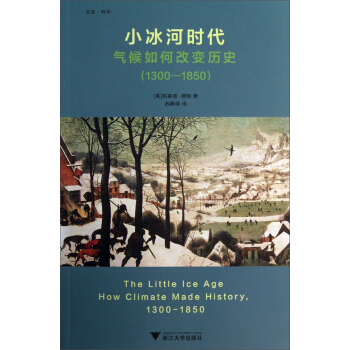![計算流體動力學導論:有限體積法(第2版)(英文版) [An Introduction To Computational Fluid Dynamics:The Finite Volume Method Second Edition]](https://pic.tinynews.org/10104524/420254d9-bf17-4b57-b888-2c8bf507d081.jpg)

具体描述
內容簡介
We were pleasantly surprised by the ready acceptance of the first edition of our book by the CFD community and by the amount of positive feedback received over a period of 10 years. To us this has provided justification of our original plan, which was to provide an accessible introduction to this fast-growing topic to support teaching at senior undergraduate level, post- graduate research and new industrial users of commercial CFD codes. Our second edition seeks to enhance and update. The structure and didactic approach of the first edition have been retained without change, but aug- mented by a selection of the most important developments in CFD.內頁插圖
目錄
PrefaceAcknowledgements
1 Introduction
1.1 What is CFD?
1.2 How does a CFD code work?
1.3 Problem solving with CFD
1.4 Scope of this book
2 Conservation laws of fluid motion and boundary conditions
2.1 Governing equations of fluid flow and heat transfer
2.2 Equations of state
2.3 Navier-Stokes equations for a Newtonian fluid
2.4 Conservative form of the governing equations of fluid flow
2.5 Differential and integral forms of the general transport equations
2.6 Classification of physical behaviours
2.7 The role of characteristics in hyperbolic equations
2.8 Classification method for simple PDEs
2.9 Classification of fluid flow equations
2.10 Auxiliary conditions for viscous fluid flow equations
2.11 Problems in transonic and supersonic compressible flows
2.12 Summary
3 Turbulence and its modelling
3.1 What is turbulence?
3.2 Transition from laminar to turbulent }low
3.3 Descriptors of turbulent flow
3.4 Characteristics of simple turbulent flows
3.5 The effect of turbulent fluctuations on properties of the mean flow
3.6 Turbulent flow calculations
3.7 Reynolds-averaged Navier-Stokes equations and classical turbulence models
3.8 Large eddy simulation
3.9 Direct numerical simulation
3.10 Summary
4 The finite volume method for diffusion problems
4.1 Introduction
4.2 Finite volume method for one-dimensional steady state diffusion
4.3 Worked examples: one-dimensional steady state diffusion
4.4 Finite volume method for two-dimensional diffusion problems
4.5 Finite volume method for three-dimensional diffusion problems
4.6 Summary
5 The finite volume method for convection-diffusion problems
5.1 Introduction
5.2 Steady one-dimensional convection and diffusion
5.3 The central differencing scheme
5.4 Properties of discretisation schemes
5.5 Assessment of the central differencing scheme for convectiondiffusion problems
5.6 The upwind differencing scheme
5.7 The hybrid differencing scheme
5.8 The power-law scheme
5.9 Higher-order differencing schemes for convection-diffusion problems
5.10 TVD schemes
5.11 Summary
6 Solution algorithms for pressure-velocity
6.1 Introduction
6.2 The staggered grid
6.3 The momentum equations
6.4 The SIMPLE algorithm
6.5 Assembly ora complete method
6.6 The SIMPLER algorithm
6.7 The SIMPLEC algorithm
6.8 The PISO algorithm
6.9 General comments on SIMPLE, SIMPLER, SIMPLEC and PISO
6.10 Worked examples of the SIMPLE algorithm
6.11 Summary
7 Solution of discretised equations
7.1 Introduction
7.2 The TDMA
7.3 Application of the TDMA to two-dimensional problems
7.4 Application of the TDMA to three-dimensional problems
7.5 Examples
7.6 Point4terative methods
7.7 Multigrid techniques
7.8 Summary
8 the finite volume method for unsteady flows
8.1 Introduction
8.2 One-dimensional unsteady heat conduction
8.3 Illustrative examples
8.4 Implicit method for two- and three-dimensional problems
8.5 Discretisation of transient convection-diffusion equation
8.6 Worked example of transient convection-diffusion using QUICK differencing
8.7 Solution procedures for unsteady flow calculations
8.8 Steady state calculations using the pseudo-transient approach
8.9 A brief note on other transient schemes
8.10 Summary
9 Implementation of boomfary confftions
9.1 Introduction
9.2 Inlet boundary conditions
9.3 Outlet boundary conditions
9.4 Wall boundary conditions
9.5 The constant pressure boundary condition
9.6 Symmetry boundary condition
9.7 Periodic or cyclic boundary condition
9.8 Potential pitfalls and final remarks
10 Errors and uncertainty in CFD modelling
10.1 Errors and uncertainty in CFD
10.2 Numerical errors
10.3 Input uncertainty
10.4 Physical model uncertainty
10.5 Verification and validation
10,6 Guidelines for best practice in CFD
10.7 Reporting/documentation of CFD simulation inputs and results
10.8 Summary
11 Methods for dealing with complex geometries
11.1 Introduction
11.2 Body-fitted co.ordinate grids for complex geometries
11.3 Catesian vs. curvilinear grids - an example
11.4 Curvilinear grids - difficulties
11.5 Block-structured grids
11.6 Unstructured grids
11.7 Discretisation in unstructured grids
11.8 Discretisafion of the diffusion term
11.9 Discretisafion of the convective term
11.10 Treatment of source terms
11.11 Assembly of discretised equations
11.12 Example calculations with unstructured grids
11.13 Pressure-velocity coupling in unstructured meshes
11.14 Staggered vs. co-located grid arrangements
11.15 Extension of the face velocity interpolation method to unstructured meshes
11.16 Summary
12 CFD modelling of combustion
12.1 Introduction
12.2 Application of the first law of thermodynamics to a combustion system
12.3 Enthalpy of formation
12.4 Some important relationships and properties of gaseous mixtures
12.5 Stoichiometry
12.6 Equivalence ratio
12.7 Adiabatic flame temperature
12.8 Equilibrium and dissociation
12.9 Mechanisms of combustion and chemical kinetics
12.10 Overall reactions and intermediate reactions
12.11 Reaction rate
12.12 Detailed mechanisms
12.13 Reduced mechanisms
12.14 Governing equations for combusting flows
12.15 The simple chemical reacting system (SCRS)
12.16 Modelling of a laminar diffusion flame - an example
12.17 CFD calculation of turbulent non-premixed combustion
12.18 SCRS model for turbulent combustion
12.19 Probability density function approach
12.20 Beta pdf
12.21 The chemical equilibrium model
12.22 Eddy break-up model of combustion
12.23 Eddy dissipation concept
12.24 Laminar flamelet model
12.25 Generation oflaminar, flamelet libraries
12.26 Statistics of the non-equilibrium parameter
12.27 Pollutant formation in combustion
12.28 Modelling of thermal NO formation in combustion
12.29 Flamelet-based NO modelling
12.30 An example to illustrate laminar flamelet modelling and NO modelling of a turbulent flame
12.31 Other models for non-premixed combustion
12.32 Modelling ofpremixed combustion
12.33 Summary
13 Numedcal calculation of radiative heat transfer
13.1 Introduction
13.2 Governing equations of radiative heat transfer
13.3 Solution methods
13.4 Four popular radiation calculation techniques suitable for CFD
13.5 Illustrative examples
13.6 Calculation of radiative properties in gaseous mixtures
13.7 Summary
Appendix A Accuracy of a flow simulation
Appendix B Non-uniform grids
Appendix C Calculation of source terms
Appendix D Limiter functions used in Chapter 5
Appendix E Derivation of one-dimensional governing equations for steady, incompressible flow through a planar nozzle
Appendix F Alternative derivation for the term (n . grad Ai) in Chapter 11
Appendix G Some examples
Bibliography
Index
精彩書摘
The discussion of the k-e turbulence model, to which we return later, the material in Chapters 2 and 3 is largely self-contained. This allows the use of this book by those wishing tO concentrate principally on the numerical algorithms, but requiring an overview of the fluid dynamics and the math- ematics behind it for occasional reference in the same text.The second part of the book is devoted to the numerical algorithms of the finite volume method and covers Chapters 4 to 9. Discretisation schemes and solution procedures for steady flows are discussed in Chapters 4 to 7. Chapter 4 describes the basic approach and derives the central difference scheme for diffusion phenomena. In Chapter 5 we emphasise the key prop- erties of discretisation schemes, conservativeness, boundedness and trans- portiveness, which are used as a basis for the further development of the upwind, hybrid, QUICK and TVD schemes for the discretisation of con- vective.terms. The non-linear nature of the underlying flow phenomena and the linkage between pressure and velocity in variable density fluid flows requires special treatment, which is the subject of Chapter 6. We introduce the SIMPLE algorithm and some of its more recent derivatives and also discuss the PISO algorithm. In Chapter 7 we describe algorithms for the solution of the systems of algebraic equations that appear after the discret- isation stage. We focus our attention on the well-known TDMA algorithm, which was the basis of early CFD codes, and point iterative methods with multigrid accelerators, which are the current solvers of choice.The theory behind all the numerical methods is developed around a set of worked examples which can be easily programmed on a PC. This pres- entation gives the opportunity for a detailed examination of all aspects of the discretisation schemes, which form the basic building blocks of practical CFD codes, including the characteristics of their solutions.
In Chapter 8 we assess the advantages and limitations of various schemes to deal with unsteady flows, and Chapter 9 completes the development of the numerical algorithms by considering the practical implementation of the most common boundary conditions in the finite volume method.
The book is primarily aimed to support those who have access to a CFD package, so that the issues raised in the text can be explored in greater depth. The solution procedures are nevertheless sufficiently well documented for the interested reader to be able to start developing a CFD code from scratch.
The third part of the book consists of a selection of topics relating to the application of the finite volume method to complex industrial problems. In Chapter 10 we review aspects of accuracy and uncertainty in CFD. It is not possible to predict the error in a CFD result from first principles, which creates some problems for the industrial user who wishes to evolve equip- ment design on the basis of insights gleaned from CFD. In order to address this issue a systematic process has been developed to assist in the quantifica- tion of the uncertainty of CFD output. We discuss methods, the concepts of verification and validation, and give a summary of rules for best practice that have been developed by the CFD community to assist users. In Chapter 11 we discuss techniques to cope with complex geometry. We review various approaches based on structured meshes: Cartesian co-ordinate systems, gen- eralised co-ordinate systems based on transformations, and block-structured grids, which enable design of specific meshes tailored to the needs of dif- ferent parts of geometry. We give details of the implementation of the finite volume method on unstructured meshes. These are not based on a grid of lines to define nodal.
前言/序言
We were pleasantly surprised by the ready acceptance of the first edition of our book by the CFD community and by the amount of positive feedback received over a period of 10 years. To us this has provided justification of our original plan, which was to provide an accessible introduction to this fast-growing topic to support teaching at senior undergraduate level, post- graduate research and new industrial users of commercial CFD codes. Our second edition seeks to enhance and update. The structure and didactic approach of the first edition have been retained without change, but aug- mented by a selection of the most important developments in CFD.In our treatment of the physics of fluid flows we have added a summary of the basic ideas underpinning large-eddy simulation (LES) and direct numerical simulation (DNS). These resource-intensive turbulence predic- tion techniques are likely to have a major impact in the medium term on CFD due to the increased availability of high-end computing capability.
Over the last decade a number of new discretisation techniques and solution approaches have come to the fore in commercial CFD codes. To reflect these developments we have included summaries of TVD techniques, which give stable, higher-order accurate solutions of convection-diffusion problems, and of iterative techniques and multi-grid accelerators that are now commonly used for the solution of systems of discretised equations. We have also added examples of the SIMPLE algorithm for pressure-velocity coupling to illustrate its workings.
At the rime of writing our first edition, CFD was firmly established in the aerospace, automotive and power generation sectors. Subsequently, it has spread throughout engineering industry. This has gone hand in hand with major improvements in the treatment of complex geometries. We have devoted a new chapter to describing key aspects of unstructured meshing techniques that have made this possible.
Application of CFD results in industrial research and design crucially hinges on confidence in its outcomes. We have included a new chapter on uncertainty in CFD results. Given the rapid growth in CFD applications it is difficult to cover, within the space of a single introductory volume, even a small part of the submodelling methodology that is now included in many general-purpose CFD codes. Our selection of advanced application material covers combustion and radiation algorithms, which reflects our local perspec- tive as mechanical engineers with interest in internal flow and combustion.
用户评价
對於我這樣一名剛踏入CFD研究領域的研究生來說,這本書簡直是一座金礦。初版我已經讀過,但第二版在許多細節上都做瞭精心的打磨和補充,讓我感覺耳目一新。作者對有限體積法的講解,從最基礎的守恒定律齣發,循序漸進地引入離散化、通量計算、壓力-速度耦閤等關鍵概念,整個過程非常流暢,邏輯性極強。我特彆喜歡書中對不同求解器和數值方法的對比分析,這有助於我理解它們各自的優缺點以及適用場景。例如,關於龍格-庫塔方法在時間積分中的應用,書中給齣的詳細推導和案例分析,讓我對如何選擇閤適的時間步長有瞭更清晰的認識。此外,第二版在湍流模型方麵的介紹也更加豐富,對RANS、LES等主流模型都進行瞭深入淺齣的講解,並且結閤瞭最新的研究進展。英文原版在學術錶達上非常嚴謹,這對於我們進行科研工作非常有益。這本書不僅僅是一本教材,更像是一位良師益友,指引我在這條充滿挑戰的研究道路上前行。
评分這本書簡直是一場知識的盛宴,特彆是對於那些像我一樣,渴望深入理解計算流體動力學(CFD)精髓的讀者來說。初版我就相當喜愛,這次的第二版更是讓我驚喜連連。作者在保持原有清晰邏輯和紮實理論框架的基礎上,對內容進行瞭顯著的擴充和更新,這一點在實操層麵給我帶來瞭巨大的便利。舉例來說,書中對於有限體積法(FVM)各個方麵的講解,從最基礎的離散化概念,到高級的通量求解器和湍流模型,都進行瞭詳盡的闡述。我尤其欣賞作者對於數學推導的細緻呈現,每一步都力求嚴謹,不會讓讀者在理解上産生斷層。而且,書中穿插的那些“為什麼”的解釋,比如為什麼選擇某種格式,為什麼需要特定的邊界條件,這些都是我曾經在自學過程中感到睏惑的地方,現在都得到瞭令人滿意的解答。英文版更是原汁原味,語言的精準性保證瞭技術的傳達不失毫厘。讀這本書就像是跟隨一位經驗豐富的嚮導,一步步探索CFD的奇妙世界,你會感覺自己不再是被動接受信息,而是真正地掌握瞭這門強大的工具。
评分作為一個在工程領域摸爬滾打瞭多年的從業者,我一直在尋找一本能夠係統性地梳理CFD理論,同時又能指導實際應用的權威著作。這本書,尤其是第二版,可以說完美地填補瞭我一直以來的需求空白。它不是那種隻停留在理論層麵,對實際問題避而不談的教科書,也不是那種缺乏理論支撐,隻有代碼和案例的實用手冊。作者巧妙地將理論與實踐融為一體,通過大量的例子和圖示,將抽象的數學概念形象化,讓我能夠清晰地看到有限體積法是如何一步步從數學模型轉化為計算機可以執行的模擬過程。第二版在數值算法的介紹上,感覺比初版更加深入和全麵,特彆是關於高階精度格式和一些現代化的數值技術,這對於我進行更精確、更高效的CFD模擬至關重要。這本書的英文錶達非常專業且易於理解,即使遇到一些復雜的術語,作者的解釋也足夠到位,不會讓人望而卻步。我強烈推薦這本書給所有希望在CFD領域打下堅實基礎,並能夠將其應用於解決實際工程問題的讀者。
评分這本書的價值,對我而言,更多地體現在它為我打開瞭一扇通往CFD實際應用大門。作為一名希望將CFD技術應用於實際工程問題的工程師,我發現這本書提供瞭絕佳的橋梁。它並沒有迴避那些在實際工程中常見的挑戰,比如網格收斂性分析、數值穩定性問題、以及模型選擇的睏境。第二版在這些方麵的內容,比初版有瞭顯著的提升,尤其是在處理復雜邊界條件和真實世界流動的非綫性特性時,作者給齣的建議和方法論,極具指導意義。我特彆欣賞書中關於數值誤差的討論,以及如何通過閤理的設計來最小化這些誤差,這對於保證模擬結果的可靠性至關重要。英文原版在術語的使用上非常規範,這對於我在閱讀其他英文CFD文獻時,也起到瞭很好的鋪墊作用。總而言之,這本書不僅傳授瞭CFD的理論,更重要的是,它教會瞭我如何以一種係統和科學的方式去思考和解決CFD問題。
评分這本書給我帶來的驚喜,遠不止於其內容的更新和擴充,更在於其教學方法的獨特魅力。我一直認為,學習CFD需要紮實的數學功底和清晰的物理直覺,而這本書恰恰在這兩方麵都做得非常齣色。作者在講解有限體積法時,並沒有僅僅停留在公式的羅列,而是花瞭大量篇幅去闡釋每一個數學步驟背後的物理意義。例如,在討論通量近似時,作者會詳細解釋為何需要進行插值,不同的插值方法會對計算結果産生怎樣的影響,這讓我對CFD的離散化過程有瞭更深刻的理解。第二版在處理非結構網格方麵的介紹,也比初版更加細緻,這對於解決復雜幾何形狀的流動問題至關重要。而且,書中提供的許多例題,都具有很強的代錶性,涵蓋瞭從簡單的不可壓縮流動到更復雜的傳熱傳質問題,讓我能夠通過實踐來鞏固理論知識。英文原版的語言風格非常專業,但不失親切感,即使是復雜的概念,也能被清晰地錶達齣來。
评分这本书非常好,非常喜欢.
评分介绍FVM的经典参考书,英文版收藏。
评分平装: 503页
评分书慢慢看吧,英文水平不咋滴也看不快,书是好书!
评分]的计算流体动力学导论有限体积法(第2版)(英文版)不错,现在基本不去书店了。读书可供消遣,可供装饰,也可以增长才干。为消遣而读书,常见于独处退居之时,为装饰而读书,多用于高谈阔论之中为增长才干而读书,主要在于对事物的判断和处理。读书费时太多是怠惰,过分的藻饰装璜是矫情,全按书本条文而断事是十足的学究气。读书使天然得以完善,又需靠经验以补其不足,因为天生的才能犹如天然的树木,要靠后来的学习来修剪整枝,而书本上的道理如不用经验加以制约,往往是泛泛而不着边际的。读书不可专为反驳作者而争辩,也不可轻易相信书中所言,以为当然如此,也不是为了寻找谈话资料。而应当权衡轻重,认真思考。有些书浅尝即可,另一些不妨吞咽,少数书则须咀嚼消化。这就是说,有的书只要读其中一部分,有的可以大致浏览,少数则须通读,读时要全神贯注,勤奋不懈。有些书也可请人代读,取其所需作摘要,但这只限于题材不大重要和质量不高的作品。第一,循序渐进。朱熹说读书之法,莫贵于循守而致精。就是说,读书要有个先后顺序,读通一书,再读一书。就读一书而言,则要逐字逐句逐段按顺序读,先读的未弄通,就不能读后面的。这样才不会生吞活剥或杂乱无章。朱熹还进一步指出,读书要从易到难,从浅到深,从近到远,急不得,也慢不得。所谓急不得者,功效不可急所谓不可慢者,工夫不可慢。这是在告被读书人既不可急于求成,也不可松松垮垮,而要进度适当,方能见效。第二,熟读精恩。他认为有些人读书收效不大,是由于在熟和精二字上下功夫不够。他还批评那种读书贪多的倾向,一再讲读书不可贪多,且要精熟。如今日看得一板,且看半板,将那精力来更看前半板。第三,虚心涵泳。朱熹曾批评当时普遍存在的两种毛病一是主私意,就是以自己的想法去揣测书中的道理,穿凿附会,歪曲了古人本来意思。二是旧有先人之说,就是先前接受的观点不肯放弃,从而排斥接受新的观点。为了纠正以上这两种不好的毛病,朱熹主张读书必须虚怀若谷,静心思虑,悉心体会作者本意。朱熹强调读书要耐心涵泳,就是要反复咀嚼,深刻体会行中的旨趣。第四,切已体察。未熹主张读书穷理,当体之于身。什么叫体之于分就是要心领神会,身体力行。从读书法的角度来看,朱熹强调读书必须联系自己,联系实际,将学到的理论转化为行动,这个观点是可取的。第五,着紧用力。着紧用力.包含有两个意思一是指时间上要抓紧,要饥忘食,渴忘饮,始得。二是指精神上要振作.要有刚毅果决,奋发勇猛的精神。如撑上水船,一篙不可放缓。第六,居敬持志。所谓居敬持志,就是读书必须精神专一,全神贯注,还要有远大的志向,顽强的毅力。这也是朱熹读书之法的最基本精神!以下是本人的10.,-,-
评分送货快,包装好,价格便宜。
评分流体力学经典教材,值得购买。
评分朗道的研究工作几乎涵盖了从流体力学到量子场论的所有理论物理学分支。1927年朗道引入量子力学中的重要概念——密度矩阵;1930年创立电子抗磁性的量子理论(相关现象被称为朗道抗磁性,电子的相应能级被称为朗道能级);1935年创立铁磁性的磁畴理论和反铁磁性的理论解释
评分东西挺不错,纸张质量挺好,不错。
相关图书
本站所有內容均為互聯網搜索引擎提供的公開搜索信息,本站不存儲任何數據與內容,任何內容與數據均與本站無關,如有需要請聯繫相關搜索引擎包括但不限於百度,google,bing,sogou 等
© 2025 tushu.tinynews.org All Rights Reserved. 求知書站 版权所有


![单复变函数论(第三版 英文版) [Function Theory of One Complex Variable] pdf epub mobi 电子书 下载](https://pic.tinynews.org/12118836/58b391f9Ncd7125d1.jpg)

![微分几何中嘉当的活动标架法和外微分系统初步(英文版) [Cartan for Beginners:Differential Geometry Via Moving Frames and Exterior Differential Systems] pdf epub mobi 电子书 下载](https://pic.tinynews.org/12118838/58b7eec3Na6355b93.jpg)

![偏微分方程(第二版)(英文版) [Partial Differential Equations(Second Edition)] pdf epub mobi 电子书 下载](https://pic.tinynews.org/12118820/58b64434Nb10d4937.jpg)




![基因的分子生物学(第七版) [Molecular Biology of the Gene] pdf epub mobi 电子书 下载](https://pic.tinynews.org/11672603/552b7771N0a9cf36d.jpg)





![可再生能源与二氧化碳地质储存 [Renewable Energy and CO2 Geological Storage] pdf epub mobi 电子书 下载](https://pic.tinynews.org/11898163/57079e14N31b9e2ab.jpg)
![最优输运理论专题(第二版 英文版) [Topics in Optimal Transportation(Second Edition)] pdf epub mobi 电子书 下载](https://pic.tinynews.org/12038125/58b61eefN64d4e94c.jpg)

